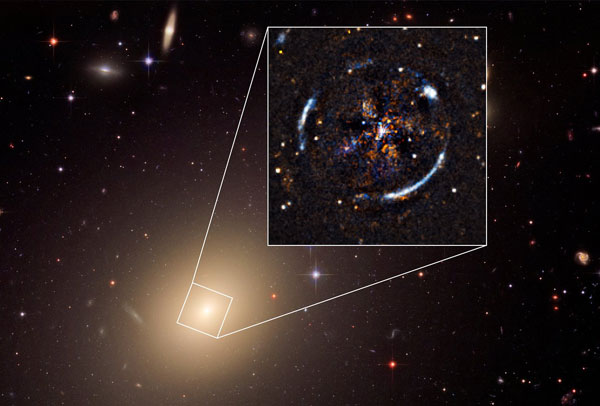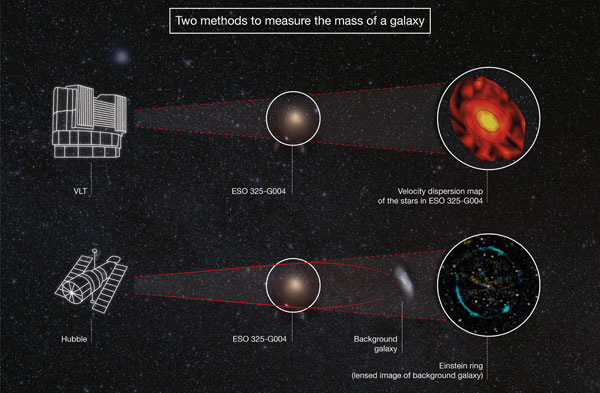Astronomers have conducted the best, galaxy-scale test of general relativity yet, and it rules out some (but not all) theories of modified gravity.
General relativity — which describes our modern understanding of gravity as the curvature that mass induces on spacetime — has been extensively tested in our solar system. It has passed every one of these tests with flying colors.
But fewer tests exist on scales of thousands or millions of light-years. It is precisely these scales that are relevant to theories of modified gravity, which provide an alternative to the existence of dark matter. They predict that gravity behaves differently over far distances than it does in our solar system. While some tests on galactic scales have been conducted, they haven’t been robust enough to rule out modified gravity.
Now, a study led by Thomas Collett (University of Portsmouth, UK) in the June 22nd Science (preprint available here) has provided such a test using Hubble Space Telescope and Very Large Telescope observations of a lensed galaxy. The light from a star-forming galaxy in a universe just 3 billion years old passed by a nearby galaxy, whose gravity acted as a lens, and bent the background galaxy’s light into a blue circle.

ESO / ESA / Hubble / NASA
Collett and colleagues first calculated the mass of the intervening galaxy by measuring the movements of stars within it. Then they measured the spatial curvature generated by each unit mass of the intervening galaxy. The mass inferred by spacetime curvature is precisely consistent with the mass measured by the stars, exactly as general relativity predicts.
Unlike previous lensing tests of relativity, Collett's team relied less on assumptions about the nature of the intervening galaxy. So this test is relatively free of systematic uncertainties that have plagued previous studies.

ESA / Hubble / ESO / NASA
Lucas Lombriser (University of Geneva), who was not involved in the study, calls the measurements, “the most robust test of gravity of this type and on these length scales to date.”
“However,” he adds, “while this new test rules out some alternative gravity theories, there are many others that remain compatible with the measurement.” While this study limited any variations in gravity on scales less than 6,500 light-years, additional tests will still be needed to rule out modified gravity more generally.
 0
0









Comments
You must be logged in to post a comment.